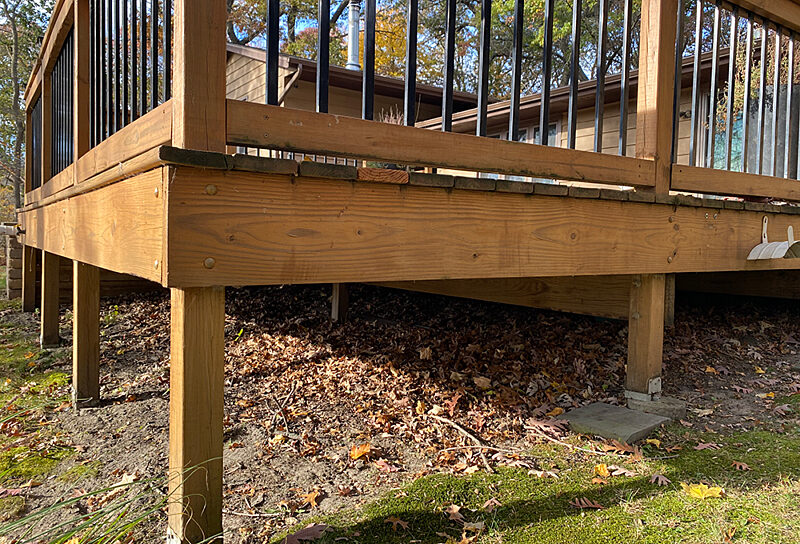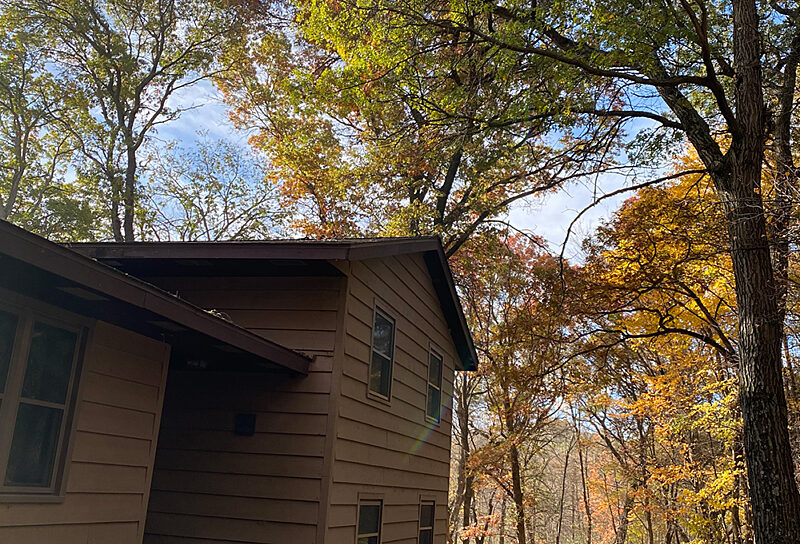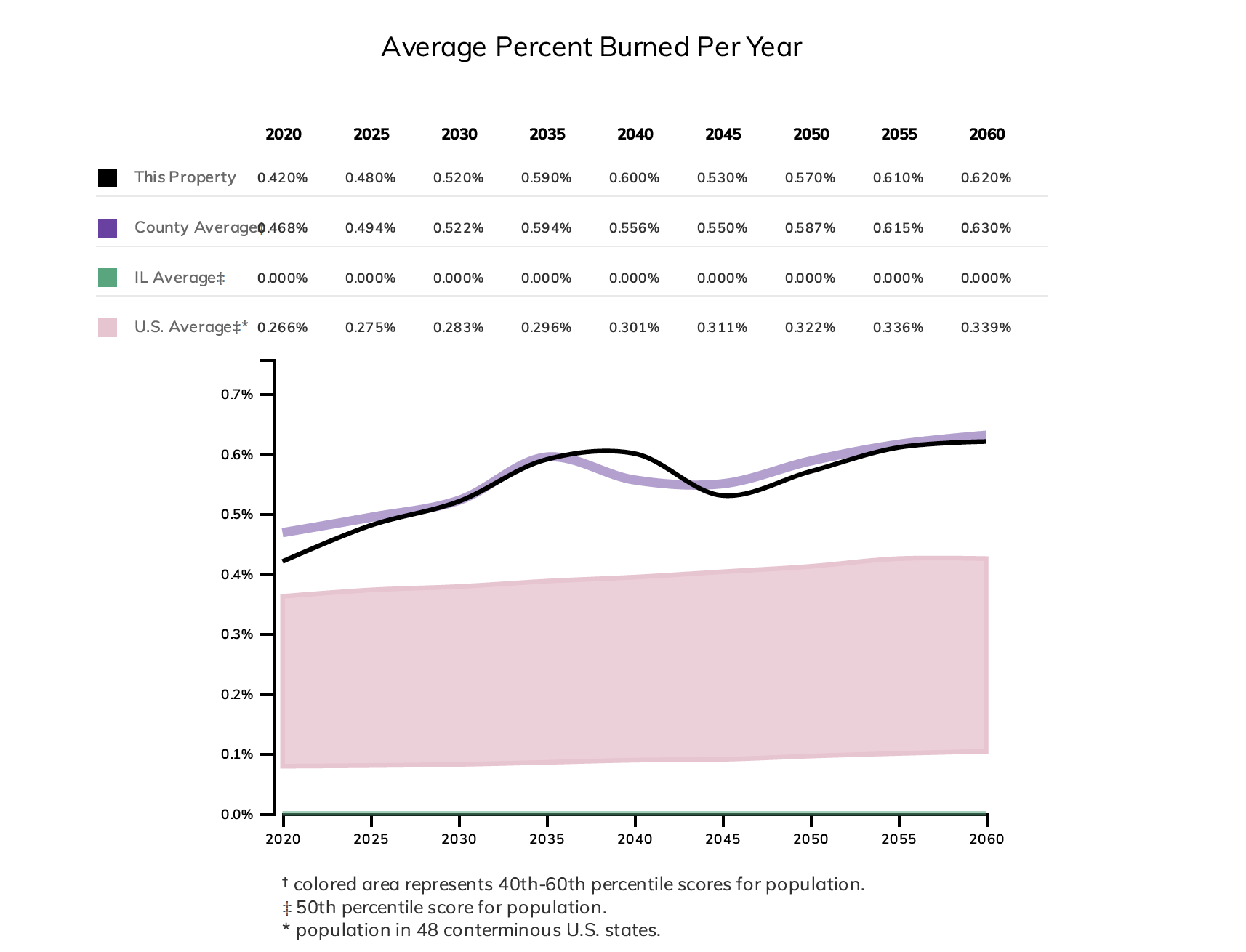After Hurricane Michael wreaked havoc on Mexico Beach, Florida in 2018, a single home was left standing among the wreckage of the beachfront. The surviving structure, featured by The New York Times, benefited from reinforced concrete, tall pilings that allowed storm surges to pass beneath, and a roof specifically designed to keep the wind from plucking it off the top of the house.
This kind of building, a standout not only on the Florida Panhandle, but in the United States, is what is termed a “resilient” home — purpose-built to withstand extreme weather and natural disasters.
Resilience is one of the many attributes that make a home high performing. In this resilient home series, we’ll explore the five main threats to your home and what you can do to fortify your home against them. Let’s begin by examining fires.
The Threat of Fire to Homes
In 2020, a U.S. fire department responded to a fire every 23 seconds on average, according to the National Fire Protection Association. In that year alone, U.S. homes endured $32.4 million in property loss.
If you’re planning to build a home, the first step in fire mitigation is choosing a location with reduced exposure to and risk of wildfires.
“Wildfires, with the absence of strong winds, will follow the topography — burning primarily upslope or up-canyon,” says Kerry Harp, senior sustainability analyst at Pearl Certification. “Houses at the top of hills, on steep slopes, or at the base of canyons may be at a higher fire risk.”
Homes located in the wildland-urban interface (WUI) face a greater threat of fires caused by lightning strikes, embers from burning debris, and fallen power lines, among others. (Visit this website to determine if you reside in a WUI.) If located in a WUI, check with your local jurisdiction to determine if the community follows IWUIC guidelines. If they’re not playing by the rules, encourage local officials to adopt the IWUIC code.
Protect Your Home From Fire
For those of us with homes that we cannot pick up and move, below are precautions (in order of importance) you can take to protect your home from the three primary causes of fire — embers, radiant heat exposure, and direct flame contact.
Enhance Your Roof Protection
The IWUIC mandates that homes in a WUI abide by the following precautions. Even if you don’t live in a WUI, you may want to implement these safety measures depending on your home’s risk of fire, such as proximity to power lines.
Opt for Class A roofing (as opposed to B or C) for the best prevention performance against fires. Class A roofing options include fiberglass-reinforced asphalt shingles, fiber-cement shingles, metal, slate, and concrete or clay tiles.
Use noncombustible, fire-resistant materials for eaves (the overhanging lower edge of a roof), soffits (the material beneath the eave that connects the far edge of your roof to the exterior wall of your house), fascias (the long, straight board that runs along the lower edge of the roof), gutters, and leaf guards.
Keep embers at bay by screening all vents, chimneys, and stove pipes, and practice proper maintenance by keeping your roof tidy (i.e., clear from debris) and replacing broken or missing shingles/tiles.
Fortify Your Walls
Walls should be built of fire-resistant materials, as required by the IWUIC. The material between window and door frames and the exterior wall should also be noncombustible or fire-resistant.
Hire a qualified contractor to seal all holes and gaps in the building envelope and weatherstrip/caulk around all windows, doors, and skylights to prevent embers and smoke from entering your home.
Address Your Windows
This may sound obvious, but be sure to repair or replace any broken or loose windows, doors, skylights, and screens. Per IWUIC requirements, windows and glass doors should be multi-pane or tempered safety glass. Low-e glass coatings provide a higher level of resistance to radiant heat, as well as protection against ultraviolet and infrared light without compromising the amount of light entering the home. Refrain from using plastic glazing, especially in skylights, because it is more susceptible to melting and exposing the home to embers and flames.
Opt for metal or metal-clad window frames, and install noncombustible screens on all operable windows to help keep embers clear of the home and decrease radiant heat exposure. If faced with the threat of wildfire, close all windows, doors, and skylights.
Strengthen Your Doors
The IWUIC requires fire-rated entry doors composed of noncombustible materials or at least 1.75 inches of solid core wood.
Garage doors should be insulated and made from noncombustible materials.
Install Monitoring and Suppression Equipment
Basic monitoring measures include smoke detectors and carbon monoxide monitors. They’re required by code, so they should already be installed.
Equip your home with fire extinguishers, and set a maintenance reminder for yourself in Pearl’s Green Door app so that you receive a notification when it expires and requires replacement.
Arm your home with hoses that extend to the far reaches of your property, and depending on the level of threat of wildfires, consider a sprinkler system — it can prevent spot fires caused by sneaky embers that manage to slip by your other defenses.
Extremely high-risk homes may even benefit from exterior sprinkler systems to douse the property before a wildfire threatens. These systems often can be controlled and monitored remotely for convenience and safety.

Bolster Outdoor Structures
When selecting a locale for a deck, stay clear of heavily vegetated areas and ravines, steep slopes, canyons and ridges. A fire marching up a slope is better positioned to attack the bottom and sides of the deck.
Decks, porches, and fences should be composed of — yes, you guessed it — noncombustible, fire-resistant materials. Enclose the area beneath your deck with a noncombustible, fire-resistant material or metal mesh screen, and avoid storing anything under there. Complete your setup with a metal plate where the deck railing or fencing meets the home’s exterior wall.
Surround Your Home with a Zone Defense
As you have your defenses highest when you’re directly beneath your own hoop, so should you for the space within five feet of your home, including decks and other structures. This area should always be kept free of combustible materials.
Incorporate gravel, pavers, and concrete in your landscaping and replace any mulch. Choose low-growing, drought-tolerant native plants and establish them at least six inches away from your home. Consider landscaping with fire-resistant plants, which don't readily ignite and therefore don't serve as fuel. Examples include yuccas and buckwheat.
Make the path to your home difficult for fire by proactively removing dead plants and weeds, dry leaves, garbage, recycling, lumber, and other fuel sources from your yard. Driveways, walkways, patios, and decks can all serve as fuel breaks when made up of noncombustible materials. Keep an eye on your trees’ branches and trim any that overhang the roof. Ideally, keep your trees’ branches six to 10 feet off the ground.
In the five to 30 feet beyond your home’s immediate perimeter, be sure to keep lawns mowed to four inches and keep plants properly watered. Canopies of mature trees should be 10 feet from any structure and at least 18 feet away from neighboring trees. Take special care to address “ladder fuels” — vegetation that enables fire to creep from the lawn up into the tree canopy.
Even after 30 feet, it’s best to follow the guidelines above (e.g., removing dead foliage, creating fire fuel breaks with landscaping and pathways, etc.) and give the boot to plants and small trees infiltrating the space between mature trees. Keep detached structures, such as garages, sheds, and greenhouses, and firewood and other fuels at least 50 feet from your home.

Determine Your Risk of Fire
To help homeowners identify the natural disasters that pose the greatest threat to their homes — and therefore which defenses to tackle first — Green Door has integrated climate risk data solution ClimateCheck in its suite of home performance tools. With a few pieces of information about your home, ClimateCheck can provide a risk score between 1 (the lowest possible risk) and 100 (the highest possible risk) for extreme events like storms, heat waves, floods, droughts, and fires based on projected 2050 hazard risks, relative to the rest of the contiguous United States. Your home's fire risk score takes into account changing local temperatures, precipitation, and atmospheric CO2, among other factors.
The below graph is a sample of what your ClimateCheck report might say about the risk of fire to your home compared to that of other homes in your state and the contiguous U.S.
 Average Percent Burned Per Year
Average Percent Burned Per Year
Create a more resilient home by logging in to Pearl’s free Green Door app to receive your ClimateCheck score and assess the risk of wildfire for your home. Then search for a Pearl Network Contractor on the app to help fortify your home against wildfires.












